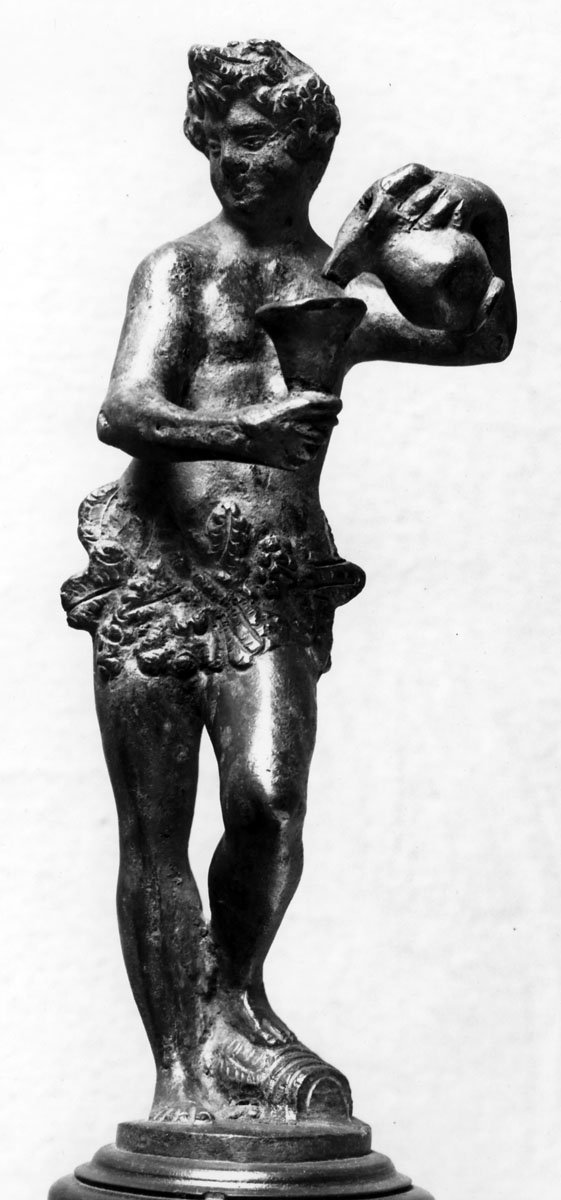
Bacchus
Sculptures
| Artist | |
|---|---|
| Culture | Italian |
| Date | second half of the 14th century |
| Object type | sculpture |
| Medium, technique | painted willow-wood |
| Dimensions | 152 × 47 × 40 cm |
| Inventory number | 1182 |
| Collection | Sculptures |
| On view | Museum of Fine Arts, Second Floor, European Sculpture 1350-1800, Gallery 1 |
One of the earliest Virgin and Child sculptures of the Collection is quite peculiar as its original gilding and applied decoration is still well preserved. The fashion of dressing up sculptures in precious laces, silk and brocade clothes for significant
ecclesiastic feasts emerged in the Middle Ages and became widespread in the baroque period. The crown of the Virgin and the robe of the Child probably were partially removed in the baroque period, so that they could be clothed. In view of the strong similarity to the Madonnas of Allegretto Nuzi (1316/20−73/74), a painter from Fabriano who was influenced by Sienese art, the sculpture in Budapest was most likely carved by someone in his circle.
Balogh, Jolán, Katalog der ausländischen Bildwerke des Museums der bildenden Künste in Budapest, IV – XVIII. Jahrhundert: 1. Textband Bd. 1, Akadémiai Kiadó, Budapest, 1975, p. 48-49., no. 35.
Dal Poggetto, Maria Grazia Ciardi Dupré, “Recensione – Jolán Balogh, Katalog der ausländischen Bildwerke der Museums der bildenden Künste in Budapest. IV-XVIII Jahrhundert Budapest, Akadémiai Kiadó, 1975 Vols. 2: I, Textband; II, Bildband.”, Prospettiva 8-11 (1977), p. 63-67.
Szmodisné Eszláry, Éva, A Régi Szoborgyűjtemény kincsei, Szépművészeti Múzeum, Budapest, 1994, p. 14-15.
Szmodisné Eszláry, Éva, The treasures of the Old Sculpture collection, Szépművészeti Múzeum, Budapest, 1994, p. 15.
This record is subject to revision due to ongoing research.